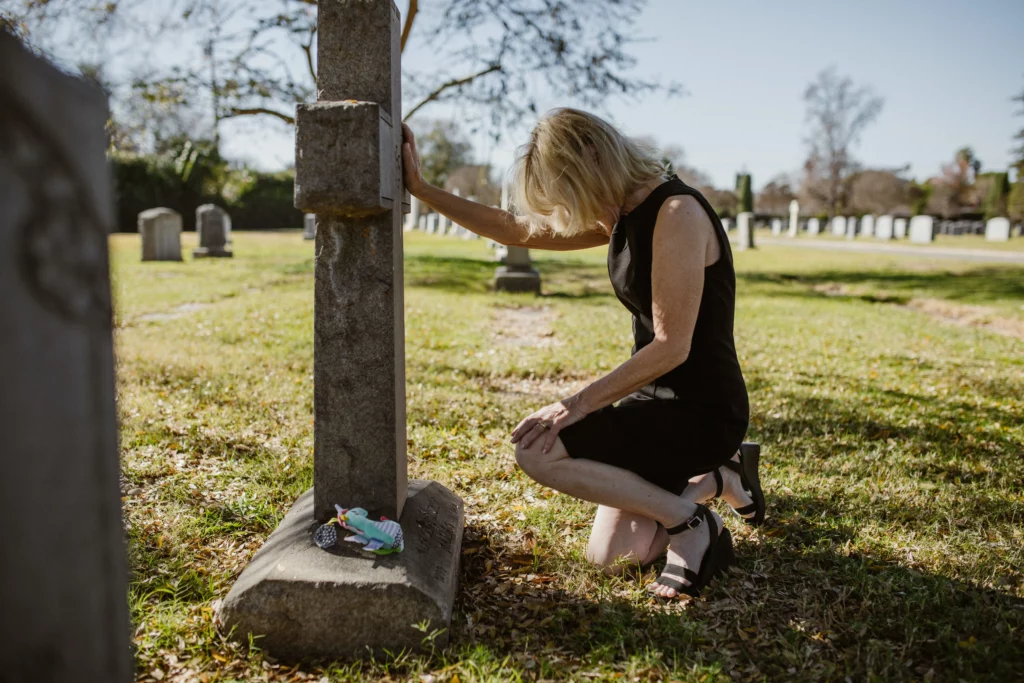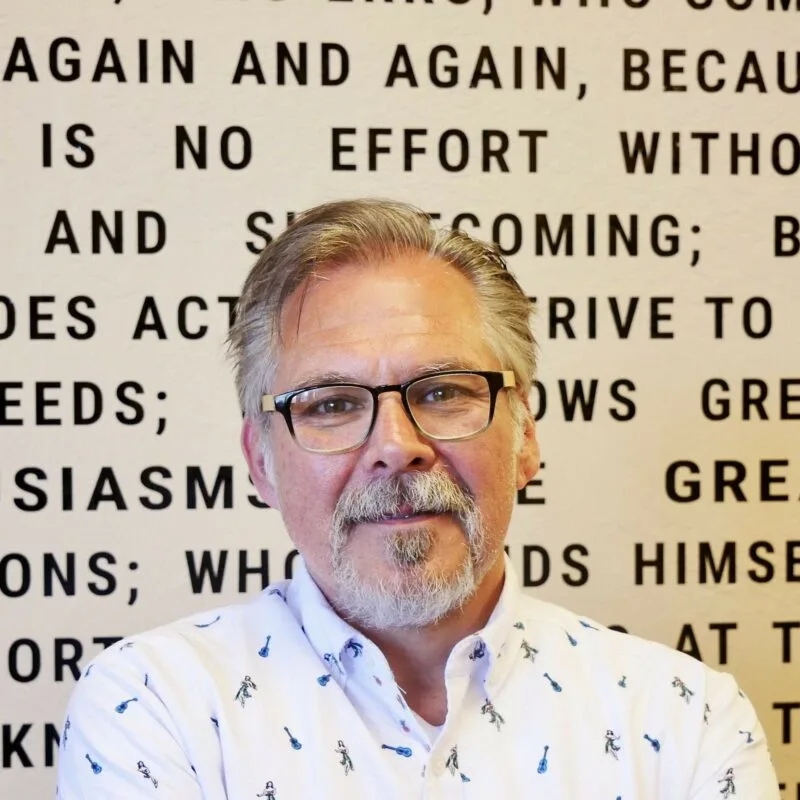In a country celebrated for its achievements, a harrowing statistic casts a dark shadow:
Nearly 1 in 10 American adults have experienced the indescribable pain of losing a family member to a drug overdose.
That’s more than the population of New York City alone grappling with such devastating grief.
As the epidemic spirals, it’s crucial to delve deeper into this national crisis, understanding its roots and searching for solutions.
The Nationwide Impact of Drug Overdose
Almost 10% of adults have lost a family member to drug overdose, reveals a recent Kaiser Family Foundation (KFF) poll.1
From July 11 to July 19, KFF questioned 1,327 adults nationwide.
Their answers highlight the severity of drug and alcohol addiction in the U.S. and how it’s affecting its citizens.
Grace Sparks, from KFF, observed an increasing national struggle with addiction, especially issues tied to opioids and fentanyl.
R. Kathryn McHugh from McLean Hospital wasn’t shocked by these findings.
She commented that substance abuse disorders touch nearly one in 10 people annually, affecting even more over time.
Alarming Rise in Overdose Rates
McHugh highlighted a concerning trend: Drug overdoses are at an all-time high.
From 2020 to 2021, the overdose death rate increased by 14%.
In 2021 alone, nearly 107,000 people suffered fatal overdoses.
This rise, McHugh explains, is primarily due to lethal opioids, such as fentanyl, present in the drug supply.
Alcohol’s Shocking Rise
Not just drugs, alcohol misuse has also spiked, especially during the Covid-19 pandemic.
Deaths due to alcohol jumped by 26% between 2019 and 2020.
That’s almost the same increase seen over the previous 10 years.
This means in 2020 alone, more than 49,000 people died due to alcohol.
According to the KFF survey, over half of the adults mentioned that a family member had struggled with alcohol addiction, and about 1 in 8 believed they might have had an alcohol problem.2
The Gap in Addiction Treatment
According to a recent poll, less than 50% of adults or their family members who struggle with addiction have sought treatment despite rising addiction numbers.
Interestingly, the poll found that more white adults (51%) sought help than Black and Hispanic adults (35%).
This disparity is not surprising, as there are significant differences in access to healthcare in our country, particularly regarding addiction treatment.
These differences manifest in various ways, such as the affordability of care, accurate diagnosis, and receiving appropriate treatment.
However, the poll also indicates that more individuals may be seeking help now than in the past, which is encouraging.
In 2021, a survey found that over 90% of people with addiction did not receive treatment.
A few reasons why people do not seek treatment include transportation issues, lack of insurance, fear of judgment from others, and doubt about the effectiveness of treatment.
Families Feel the Impact
About one out of three people in the survey said they or someone in their family had problems with drugs or alcohol.
Of these, 76% felt it changed their family relationships a little or a lot.
Many said it hurt their feelings and made money problems for the family.
A big group said these issues deeply affected their family bonds, well-being, and money.
McHugh pointed out that this survey helps us see that drug or alcohol problems don’t just hurt the person using them but their whole family, too.
The Shadow of Mental Health
With mental health becoming a big concern in the U.S., many are worried about addiction’s grip on their families.
About 1 in 3 fears a family member might overdose on strong painkillers, and only 1 in 3 adults with a strong painkiller problem get help, with just 1 in 5 getting the right meds.
The survey also reveals that one-third fear a family member might overdose on opioids, and almost 2 out of every 5 are concerned about accidentally taking fentanyl.
Rural Regions at Risk
The KFF survey shows that small towns and rural areas are hit hardest by the opioid problem.
In these rural places, 42% of people said they or a family member struggled with opioids.3
This is higher than in suburbs (30%) and cities (23%).
The survey also said that 33% of white adults, 23% of Black adults, and 28% of Hispanic adults have faced opioid problems in their families.
People from small towns not only deal with opioids more but also worry about it a lot.
About half of them fear that a family member might get addicted.
This number is higher than the worry felt by people in cities or suburbs.
Survey Concerns and What It Means
McHugh said that people can see some of the survey’s questions differently.
For example, two people might drink the same amount, but one thinks it’s a problem, and the other doesn’t.
So, the survey might not show the exact number of people with severe addiction issues.
The survey didn’t talk about how the pandemic might have affected addiction either.
Still, other studies show the pandemic made mental health problems worse for some, which can lead to more addiction.
Still, McHugh believes surveys like this help us understand how people feel about drug and alcohol use and its effects.
She thinks the country needs to do more to help people with addiction by making treatments more available and affordable.
If you or someone you know is dealing with addiction, McHugh recommends talking to a doctor or finding a local treatment center.
There’s also a free national helpline from SAMHSA that offers advice and support.
Lastly, McHugh reminded us that there’s a lot of judgment around addiction and getting treatment.
But we can change that by talking openly about these issues and supporting those who need help.
The Science Behind Drug Addiction
You may be curious about the science of drug addiction, which involves a complex interplay between brain chemistry and external factors.4
When opioids and other drugs enter the system, they interact with the brain, often stimulating the release of dopamine, a neurotransmitter associated with pleasure and reward.
Over time, as one continues to use the drug, the brain comes to rely on it to feel good, leading to increased consumption.
This is where the thin line between therapeutic use and addiction lies.
Initially, a person might take opioids for genuine pain relief, but prolonged use can lead to dependency, where the brain craves the drug beyond its therapeutic intent.
Beyond the immediate drug-brain interaction, individual susceptibility to addiction varies, and this is where genetics and environment come into play.
Some people might have a genetic predisposition, making them more vulnerable to addiction.
At the same time, environmental factors, like stress or trauma, can further increase this susceptibility.
Understanding the science of addiction makes it clear that it’s not just a matter of willpower; it’s a multifaceted issue influenced by our biology and surroundings.
So, when you hear about someone struggling with addiction, remember it’s a complex mix of brain chemistry, genetics, and life circumstances.
The Opioid Epidemic: A Growing Crisis
The opioid epidemic has rapidly emerged as one of the most pressing public health crises in the United States.
Characterized by an alarming surge in opioid-related overdose deaths, this crisis has roots in medical and illicit avenues.
Prescription opioids, initially marketed as a solution for chronic pain, led many unsuspecting patients toward addiction.
Over time, as prescriptions became harder to obtain, many turned to illicit drugs like heroin.
The situation grew more dire with the introduction of potent synthetic opioids, such as fentanyl, which carry a significantly higher risk of overdose.
These synthetics are often mixed with other drugs, amplifying their deadly effects.
As overdose rates continue to climb, it becomes increasingly clear that a multifaceted approach is needed to combat the many facets of this devastating epidemic.
Factors Contributing to Overdose Deaths
Several factors have converged to contribute to the alarming rate of drug overdose deaths in the U.S.
Firstly, the widespread availability and accessibility of opioids, both prescription and illicit, have created an environment where misuse and addiction can easily flourish.
Additionally, many individuals grappling with addiction face barriers to receiving proper treatment, as there’s a noticeable lack of access to addiction treatment centers and mental health services in many areas.
Beyond these medical considerations, economic and social pressures, such as unemployment and societal stressors, further drive people towards substance misuse as a form of coping.
Compounding these issues is pharmaceutical companies’ significant role in the opioid crisis.
Some of these companies have been criticized for aggressive marketing tactics and downplaying the addictive risks of their opioid products, leading to overprescription by medical professionals and an oversaturated market.
Their influence has undoubtedly profoundly affected the proliferation of opioid misuse and subsequent overdose deaths.
The Economic Costs
The economic costs of the opioid epidemic are vast and multifaceted.
Healthcare costs have surged due to increased hospital stays, rehabilitation needs, and emergency responses to overdose incidents.
Beyond direct medical expenses, there’s a significant impact on the workforce.
Many affected individuals face lost productivity, unemployment, or reduced earning potential due to their struggles with addiction.
Additionally, there are sizable legal and criminal justice expenses.
The financial strain is immense, from the costs of prosecuting drug-related offenses to the burden of incarceration and law enforcement.
Collectively, these economic ramifications underscore the urgent need for comprehensive solutions to the opioid crisis.
Response by Government and Institutions
Federal, state, and local initiatives have been launched in response to the drug crisis.
The National Drug Control Strategy is a critical federal initiative that mandates enhanced collaboration among government agencies to create a coordinated drug control policy to decrease substance use disorders.
The Biden administration has committed over $450 million to strengthen the domestic response to drug misuse.5
They aim to reduce deaths, finance awareness campaigns targeting youth, and support recovery efforts.
The medical community is also stepping up by promoting responsible prescription practices, monitoring opioid use, and educating healthcare professionals to avoid over-prescribing.
States and cities are playing their part, too.
Many have introduced comprehensive prescription drug monitoring programs (PDMPs) to regulate the prescription of controlled substances.
Others are broadening access to evidence-based treatments, harm-reduction strategies, and recovery support.
For instance, the life-saving Narcan (Naloxone), which reverses opioid overdoses, is now more widely available to emergency responders and the general public in some places.
Grassroots organizations and community groups are also essential, raising awareness, fighting stigmas, and offering vital support networks for those impacted by the opioid crisis.
A multi-pronged approach is essential.
Collaboration between government bodies, healthcare providers, community organizations, and individuals is vital.
By integrating these efforts, we can make meaningful progress against substance abuse and provide invaluable help to those battling addiction.
Support Systems and Rehabilitation
Support systems and rehabilitation are invaluable in the journey toward addiction recovery.
Community-based programs and support groups provide a safe environment for individuals to share their experiences, learn coping strategies, and feel less alone.
These groups, often led by people who have walked the path of recovery, provide crucial peer support.
However, rehabilitation centers face challenges like funding constraints, high relapse rates, and a one-size-fits-all approach to treatment.
To address these issues, personalized care through tailored treatment plans, holistic therapies, and evidence-based practices can be more effective.
In addition, families play a critical role in the recovery process.
Their understanding, patience, and active participation can be the foundation that supports an individual’s commitment to sobriety, making them key players in the success of rehabilitation efforts.
Prevention and Education
Prevention and education are crucial components in the battle against drug misuse.
By raising awareness about the risks associated with drug misuse, individuals can make informed decisions and be mindful of the dangers.
Early detection and intervention methods, such as regular screenings or discussions with healthcare providers, can help identify potential problems before they escalate, enabling timely support and guidance.
In this regard, schools and communities have a pivotal role to play.
Schools can equip students with the knowledge and tools to resist peer pressure and make responsible choices by integrating drug education into the curriculum and fostering open dialogues.
Community-based programs and workshops can further reinforce these messages, ensuring that youths and adults are well-informed and proactive in preventing drug misuse.
Grieving and Healing After Loss
Losing a loved one to a drug overdose is a challenging experience, and grieving and healing can be complex.
Feelings of guilt, anger, and countless unanswered questions often accompany the pain of this kind of loss.
That’s why it’s essential for those going through this heartbreak to have access to support networks and counseling.
These resources provide a safe space to process the pain, share memories, and find understanding without fear of judgment.
They can help individuals and families cope and find a way forward in despair.
Despite the challenges, seeing survivors’ resilience in tragedy is inspiring.
Many even use their grief as a catalyst for positive change, spearheading awareness campaigns or community initiatives to prevent further loss.
Their strength and determination highlight the healing potential, even in the most challenging circumstances.
The Path Forward
As discussed in this article, we need a comprehensive approach to tackle the drug epidemic.
This involves conducting extensive research and gathering accurate data to comprehend the issue and develop effective strategies fully.
We must also increase access to addiction treatment and mental health services so those in need can receive prompt assistance.
However, it is equally essential to engage communities in finding solutions.
Educating the public and eliminating the stigma associated with addiction and overdose can foster a supportive environment.
Combining these elements can promote a proactive and compassionate response to the crisis and move forward positively.
As overwhelming as the situation might seem, there’s a beacon of hope: seeking treatment can make all the difference, and with collective efforts, recovery and healing are within reach for everyone affected.

Let Us Help You Today!
If you or someone you care about is struggling with Addiction, please get in touch with us at Cornerstone Healing Center in Scottsdale, AZ. As a highly-rated addiction treatment center, we focus on holistic healing, addressing the root causes of addiction to promote lasting recovery.
SOURCES
[1] KFF Tracking Poll July 2023: Substance Use Crisis And Accessing Treatment
[2] Nearly 1 in 10 adults in the U.S. has lost a family member to drug overdose, new KFF poll finds
[3] Nearly 1 in 10 U.S. Adults Have Had a Family Member Die of Drug Overdose, New Poll Shows
[4] How Science Has Revolutionized the Understanding of Drug Addiction
[5] Biden administration announces $450M in funding to beat overdose epidemic
Published: 9/11/2023
Contributor: Julie Miller
Editor: Susana Spiegel



